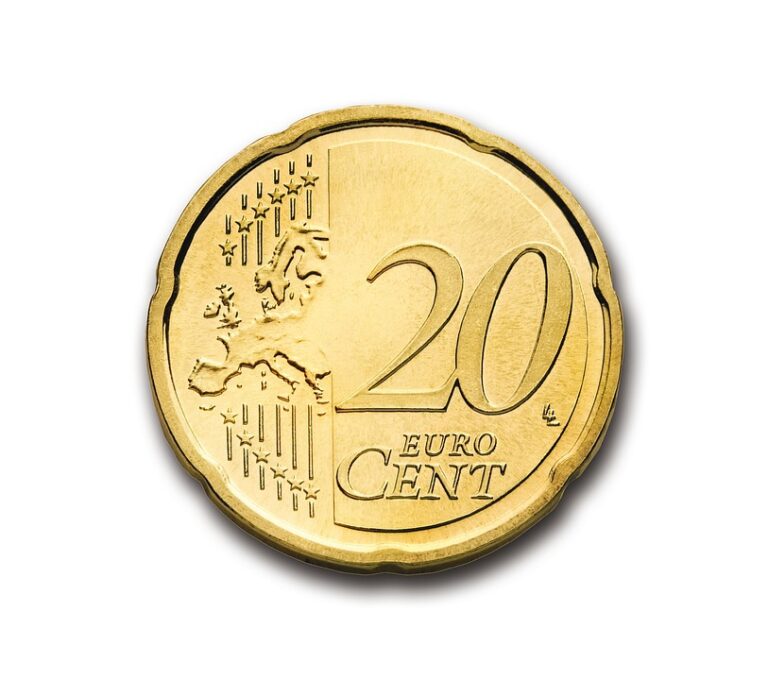Last updated Mar. 11, 2023 by Peter Jakes
Investing your money is something a lot of people think they can’t do. Or they believe it’s too complicated and needs a lot of knowledge or experience to make suitable investments.
But the reality is, there are many ways to invest your money that might be easier than you think—and if you’re starting with investing, here are some ideas for how you can get started today:
Investing in bonds
Bonds are a type of investment that can be made through a broker or financial advisor. Bonds, also known as fixed-income securities, are considered low-risk investments with long-term potential for growth.
Bonds are loans that companies and governments use to raise money to fund their operations, projects, and initiatives.
Companies pay interest to investors until the bond matures (reaches its maturity date). The longer you hold onto your bond until it grows, the better return on your investment you’ll receive when it’s redeemed.
Investing in real estate.

Real estate is a good investment, tangible, long-term, and liquid.
You can touch or feel tangible assets, like your car, couch, or watch. Long-term investments are things where the time frame matters—such as saving for retirement or paying off college loans. Liquidity means how quickly you can convert an asset into cash (i.e., if needed).
The idea behind any real estate purchase is that the value of the asset will appreciate over time and deliver equity growth so that when it comes time to sell it, there’ll be some money left over after taking out enough cash to recoup your initial investment plus interest on your mortgage payments during those years of ownership (if applicable).
Investing in a certificate of deposit (CD)
A certificate of deposit (CD) is a savings account you can open at most banks, credit unions, and online banks. When you put money in a CD, the bank puts it into your account and promises to pay interest.
The interest rate is usually higher than that offered by a regular checking or savings account because there are restrictions on withdrawing from your CD before its maturity date. This makes CDs low-risk investments and good options for people who don’t have much money to invest.
The FDIC insures CDs for up to $250k per person per institution, so they’re safe investments even if the bank fails and goes bankrupt, as many did during the Great Recession.
Investing in stocks.
Long-term investing in the stock market is an excellent way to grow your money. The stock market can be risky, but it’s also one of the best ways to ensure that your hard-earned cash will grow over time.

Stock investments give you ownership in companies whose products and services you use daily. When those companies do well, so do their shareholders (that’s you). This is why it’s vital that when picking stocks, you choose businesses with solid fundamentals that are increasing—companies like Amazon or Apple are great examples.
Suppose you’re looking into making long-term investments in individual stocks. In that case, it’s crucial to diversify across many different businesses and asset classes like bonds and real estate.
Investing with a Robo-advisor.
So what is a Robo-advisor, and how does it work?
Robo-advisors are online investment platforms that use algorithms to place your money in low-cost investments. They’re typically managed by an algorithm rather than a live person, but they give you access to human financial experts if you need extra advice.
There are many different Robo-advisors, so choosing one can be overwhelming. But once you know what to look for, finding one that’s right for you can be easy! Let’s take a look at some of the things to consider when deciding which Robo-advisor is best for your needs:
Price: The cost of using a Robo-advisor varies from company to company, but most offer low account minimums and reasonable fees (as little as 0%). Some even have free plans for those with smaller portfolios or who don’t meet specific criteria (such as making less than $30k per year). If budgeting isn’t an issue, paying more doesn’t hurt either.
Plenty of cheap options are available if the price is an essential factor, but remember that high quality comes at higher price points.
Investing through a high-interest savings account.
If you and your family are looking for a secure place to save money, a high-interest savings account might be the way to go.
If you’re wondering whether or not it’s worth opening one of these accounts, here are three things to keep in mind:
- Interest rates are low right now—so intense that some of the best high-yield savings accounts pay only 2% interest per year. That’s less than half of what they were paying back in 2011! So if you’re earning an average amount on other investments right now, opening up a high-interest savings account could help boost your returns without taking on any additional risk or complexity.
- You can earn even more by choosing one with longer terms: For example, instead of putting $1,000 into an account that pays 2% interest per year (that’s $20), consider putting it into one that pays 3% annually ($30).
Of course, this means locking up your money for longer, so there is more risk involved, but if those extra three dollars make all the difference between getting into college versus having to take out student loans, then perhaps it would make sense after all.
Investing in peer-to-peer lending platforms.
A peer-to-peer lending platform is a way to lend money to people without risk.
You don’t need to worry about things like interest rates or defaulting on loans because the platform takes care of all that. You choose which loans you want to invest in and receive monthly payments with interest from your investment.
It’s also worth noting that peer-to-peer lending has some potential tax advantages. Invest in municipal bonds through one of these platforms and live in a state with an income tax (like New Jersey).
Federal taxes on those bonds may be deductible from your federal income tax return each year if issued by your state government or municipal bond issuer; this benefit can offset some or all of their cost depending on how much money you’re earning.
Investing in index funds and ETFs
You can invest in index funds and ETFs, essentially baskets of assets tracking the market. These include stocks (which make up over 70% of US households’ wealth), bonds (30%), real estate (5%), commodities like gold and oil, and cash equivalents (0%).
While there are many different indexes to choose from—the Dow Jones Industrial Average and S&P 500 are two common ones—the Vanguard Total Stock Market Index Fund is the most popular. It holds more than 3,500 individual companies across all sectors of the economy.
The expense ratio for this fund is just 0.05%, which means that for every $100 you invest into it annually, you’ll pay just five cents per year in fees! To put that in perspective: if you have $1 million in this fund today, your annual fee will be just $50 per year.
Investment through a micro-brokerage company.
You can also invest through a micro-brokerage company. This is a great way to invest $1,000 because you can quickly get in and out of the market and access more financial tools than an online bank or credit union.
Setting up an account with a micro-brokerage company usually involves answering simple questions about your investment goals and risk tolerance. You may be asked if any securities or markets make you uncomfortable.
Still, most companies will allow anyone to open an account regardless of previous experience investing in stocks or bonds.
It’s important to remember that following this advice does not mean any specific investment recommendations or guarantee any particular outcome for individuals making investment decisions based on these tips.
Investing with a Roth IRA.
A Roth IRA is an investment account that allows you to save money for retirement. It will enable you to invest in stocks and other financial instruments with certain restrictions. You can only contribute up to $5,500 per year (for the 2019 tax year), so it’s best to start early if you’re saving this way. To open an account and begin investing:
- Go online or visit your local bank branch in person
- Pick out an investment strategy from several options (Robo-advisors offer unique services)
- Open your Roth IRA at [bank name]. There are no fees associated with opening or maintaining your new account!
Investing with a 401(k) or 403(b).
If you work for an employer, your employer may offer a 401(k) or 403(b). These retirement plans allow workers to put money into their accounts on a pretax basis. When you put money in the report, your contributions will be deducted from your paycheck before taxes are calculated.
If they don’t make sense for you now because of the income limits, keep them in mind as you get older and more financially secure—especially if your employer or organization offers a match that’ll make putting money worthwhile.
A third option is the 457 plan. This type of investment vehicle is similar to a 401(k) but applies only if you work at certain employers (the largest being state governments). If it applies to you and makes sense to contribute money into one of these accounts instead of a typical retirement plan like a 401(k), do so.
Invest in Cryptocurrencies
Cryptocurrencies are a new way to make money. They’re similar to regular currencies, but instead of being backed by countries or other entities, they’re supported by math (for the most part). They can be used like cash for purchases and payments but also allow you to invest in them.
You can buy cryptocurrencies from an exchange like Coinbase or Kraken and store them in a digital wallet like Jaxx. Many types of cryptocurrency are available for purchase: Bitcoin, Ethereum, and Litecoin are some of the more popular ones right now.
Buying and selling cryptocurrencies isn’t always easy because there are many different exchanges where you can do this—and even those that offer a “buy” option may not let you withdraw funds into your bank account without jumping through some hoops first! But if you want to explore investing with cryptocurrencies, then take note:
You should only invest in what’s comfortable for you. Don’t put more money than YOU feel comfortable losing on any investment—especially something so volatile as cryptocurrencies.
How to invest and make money daily.
When you invest money in the stock market, you buy a small piece of an actual company. When that company does well, its stocks do well—which is good for you since it means your shares (aka the piece of that company you own) are worth more than they were before. If you invest in enough companies, this can add up to a lot of money.
Frequently Asked Questions
What would be the best investment for $1000?
The best investment for $1000 depends on how soon you think you’ll need the money again. A good rule of thumb is that the shorter the time until you need the cash again, the safer you should make your investment—meaning that for an investment with a short horizon, your ideal choice is a very low-risk bond or certificate deposit (CD).
Where should I invest 1000 right now?
Stocks: When you buy stocks, you become a partial owner of the company whose stock you own. You will benefit directly if the company makes more profits and grows its business, which is usually reflected in an increase in the value of the stock.
The drawback to investing in stocks is that if the company does poorly, your stock will also drop in value.
What is the safest investment with the highest return?
The safest investment with the highest return is an index fund. An index fund is just a collection of stocks whose value will rise over time as long as the market grows, which it usually does.
They track an index like the S&P 500 or the Russell 2000, which are collections of companies whose prices change in response to things like stock splits and mergers, but always go up over time because their companies are growing their businesses and making more money.
What small investments make money?
The term “small investments that make money” could mean several different things, depending on what type of small investment you’re talking about. It could be mutual funds, stocks, or bonds.
It could also be real estate, a business venture, or a used car. So many people think that investing large sums in a business enterprise is the only way to make money, but this is not true at all.
Your best opportunity for making money with a small investment may be in something as simple as a used car.
How can I invest and make money daily?
One strategy is to use a Robo-advisor like Betterment, which allows you to invest in a customized portfolio of low-cost exchange-traded funds (ETFs), based on your goals and risk tolerance.
Betterment rebalances your ETF holdings daily based on your personal asset allocation. This means that as the market fluctuates over time, you’ll be less exposed to risk and more likely to keep pace with market growth.
What should I do with 1000 dollars?
Invest in an Index Fund or ETF. An index fund is a mutual fund that holds every stock in the market. If you don’t have time to read about the companies you’re investing in and want to leave it up to the professionals, this can be a great way to go.
Your money will go further by diversifying your risks (like if one company’s stocks crash, others can help keep things afloat). And since index funds don’t rely on one person’s judgment, they’re deemed low-risk investments.
Where can I put my money to earn the most interest?
One is to invest in stocks, which will grow with the market and pay dividends. Another is to put your money in a savings account at a bank. Savings accounts are covered by FDIC insurance, so your money should be safe there. But you want to get the most bang for your buck when you have extra cash.
Summary.
Hopefully, this article has helped you understand how to invest your money. Remember that every investment has its risks and rewards, so make sure to do research before making a choice!



